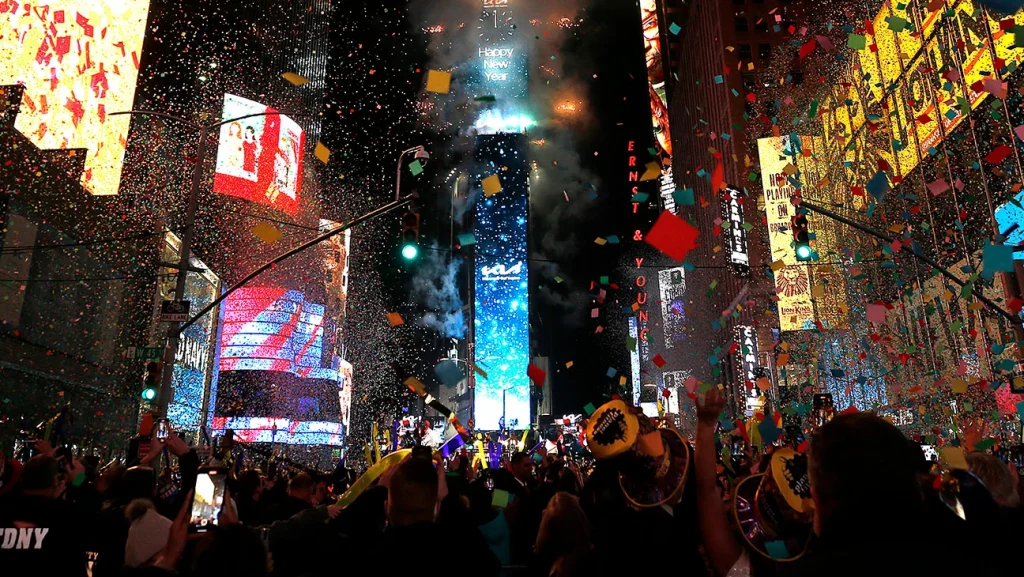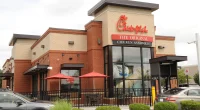The ball drop is now a countdown that ends when the clock strikes midnight. But in the past, it was more like a starter’s gun.
Happy New Year and good morning! Today, we’ll find out why the ball doesn’t drop in Times Square like it used to. Hint: A small change that is almost forgotten can make all the difference.
Michael Miscione, who used to be the historian for the borough of Manhattan, did some research and found out that something has changed since the first New Year’s Eve party in Times Square. He explains:
If you could go back in time and land in Times Square on December 31, 1907, you would see a lot of familiar things, like drunks and crazy people, a loud crowd, and, of course, the ball drop.
It was the fourth time that a party had been held in Times Square. The First Time Fireworks Went Off From The Roof of One Times Square Was in 1904. In 1905 and 1906, The New York Times, which put on the party, chose an electric light show instead of fireworks because it was less likely to start a fire in the neighborhood.

The Times came up with the ball drop for 1907. By today’s standards, the first ball doesn’t seem like much. According to the official Times Square Website, it was five feet across and had 100 regular 25-watt light bulbs, but The Times said it had 216 lamps, not 100. No matter what, it was a simple event.
And it fell at a time that was different from what we’re used to. At midnight, it started going down. We think of the ball drop as a countdown, not as the gun that starts the race.
The sailors would have understood this. The sphere in Times Square was used as a time ball, which is an agreed-upon time signal dropped from a place that ships can see. In the days when ships went by sail, the ship’s navigator needed an accurate clock to figure out where his ship was at sea.
Greenwich Observatory in England is home to the most well-known time ball. It was put in place in 1833, and it still works, but mostly for tourists and not for ships. The ball is lifted to the top of its post every day at 12:58 p.m., and it falls at 1 p.m. It’s not quite falling, but it goes down fast enough to reach the bottom of the post in a few seconds.
There is a time ball in New York City, but it is not used to tell time. It is at the South Street Seaport on top of the Titanic Memorial Lighthouse.

So, since maritime time balls had been used for decades and were known to people in the early 1900s, it’s not surprising that the first Times Square balls were based on them. If they weren’t, it would be strange.
But that begs the question: When did the ball drop become the way we know it now, with a countdown?
I dug deep into the digital archives of The New York Times and found that it happened on December 31, 1938.
The drop of the ball on December 31, 1937, was the same as the one in 1907. The Times reported on Jan. 1, 1938, that when the lit ball fell from the top of the Times Building at midnight, a roar of voices and horns went up.
The drop in 1938 was not the same. Again, from The Times: “At exactly three seconds to midnight, at his lofty station atop the Times Building, Thomas Ward, an electrician who was in charge of the “dropping of the ball” for the first time in 1914, celebrated his silver jubilee by pulling a switch that sent the bulb-studded globe sliding down the 65-foot flagpole.

It reached the bottom at exactly midnight.” The article said that Ward then flipped another switch to light up the numbers 1,93,9, and 9 for the new year.
The drop was made longer the next year, to five seconds. In the end, it would be 60 seconds, of course.
Maybe the change in 1938 didn’t get much attention because there were more interesting things going on that night. The opening of the 1939 World’s Fair was just four months away, so the fair’s publicity team came up with a plan.
The “Girl of Tomorrow,” Gladys Bensen, 18, from Jamaica, Queens, climbed out of a miniature “Perisphere,” the giant white orb that, along with the “Trylon,” was a symbol of the fair.
The fair would look into the future and predict long-term changes in technology, fashion, and ways of life. But when Ward pulled his switch, the world had already changed in a small way. The ball drop in Times Square on New Year’s Eve would never be the same again.

Irving is the Chief Editor at the Landscape Insight. He lives just outside of New York. His writings have also been featured in some very famous magazines. When he isn’t reading the source material for a piece or decompressing with a comfort horror movie, Irving is usually somewhere in his car. You can reach Irving at – [email protected] or on Our website Contact Us Page.








